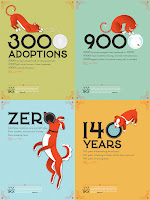At age 65, Erik Spiekermann is known as one of the most successful german typographers and graphic designers. He is a professor at the University of the Arts Bremen.
For a few years in his early design days, he worked as a freelance graphic designer in London.
He has started multiple foundations which have soared in the world of design. MetaDesign was his first and then there was FontShop, in which he co-owned with his wife, Joan. More recently he started United Designers Network. He has been awarded multiple times as his times in college design courses as a doctoric level professor. He is actually currently a professor at University of Arts in Bermen and stilll creating typefaces like the infamous Meta in present day.
This pretty much sums Erik Spiekermann up in a nut shell.
Spiekermann's typeface, Meta
What can you take away from the video and the designer himself?
Right from the beginning of the interview given by Elliot Stocks, Spiekermann had great points. It's refreshing to hear from a designer that is straight forward and he seems to know exactly what he likes and doesn't like in the world of typography and design in general. I like how he emphasized from the get go that paper is paper or a screen is like every other screen. Elliott asked about an iphone applocation but to Erik he seems to think that whether it's on a phone, computer, or paper it all has to be designed for the user to understand and keep being able to use. I completely understand. I think that if an application is made for a specific reason, there shouldn't be all different complicated add ons that would just draw some consumers away. For example, in the interview they used an airprt terminal type of phone app. The point is to easily and quickly get the user to the correct trerminal in the airport. Not distract them with all these confusing random features that they probably don't have the time to look into at the moment they're about to miss their flight back home. It makes sense to make those sort of designs more specific and user friendly. Also, I agree with Spiekermann when he discusses color a little bit. He uses a lot of black and white compositons as well as black, white, 1 color designs. I think those can sometimes be the most intriguing works. Instead of being lost in 5 loud, bright colors, it can draw you to the focus of the design. For instance, if a book cover has a color palatte with 5 colors verse 2 or 3, yes it might draw you to pick it up but many would probably stare at the colors and then look at the type and what the title and author even is. Plus, in some cases black and white can look crisp, clean and fitting for certain designs, such as type dominate works.
It's funny that Erik talks about how now all of a sudden designers seem to be using grids when he has used them since he was a young boy. I think he probably right though. I didn't really think of grids until coming into college and being told by professors as advice to use them or it was mandatory for a porject. Now, I always try and use a grid, especially for my typographic designs. It's pretty obvious now to me when I see a page that didn't use one. For Spiekermann's works, such as his book spreads, it is clear that he has a specific grid that he follows for the majority of his famous work that's in the public eye. He also makes sure not to break any type rules such as widows, rivers, and so forth, which unfortunately even really famous designers still do and of course I have too. But after being in the department of design at KU, doing the projects I have, and watching this video, I can see myself being a lot more conscience about any typography I put in a composition.
The last note to add about Spiekermann is that I find him to be even more of a creative mind due to him not using his own type faces most of the time. Even though he has asthetically pleasing fonts like Berliner Grotesk, Govan, and Meta, he still likes to use other fonts that he never touched during the making process and that he sees with fresh eyes. He has been a designer for too many years to count and he is still wanting to swithc up his designs and keep being innovative. I can't think of that many designers that wouldn't just go with the obvious and use their own material that they have easy access to. It also must be difficult for him to not be completely attached to his own work that he spent so much time on. I know from experience, when I make something, like a book cover and use a certain illustration that I worked hard on perfecting and getting just right, It's not easy to throw it to the side and start over with completely new ideas. However, that's part of being a designer and it's clear that Erik Spiekermann knows what it means to be a graphic designer.
One of his most famous and one of my favorite works by Erik.
Simple and clever.
Inspiration for my book jacket ideas.
















































